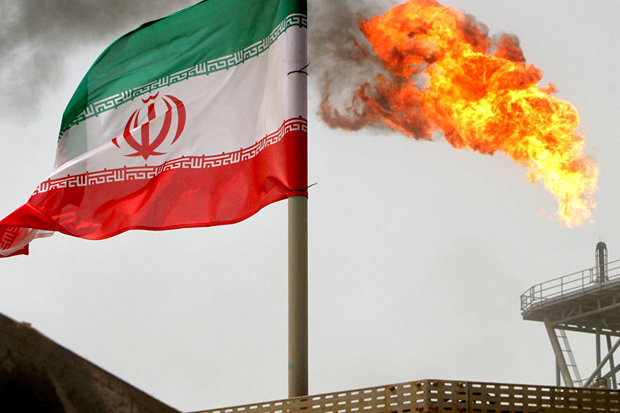Sanctions 'blessing in disguise' for Iran to unlock potentials

TEHRAN – Months have passed since U.S. President Donald Trump started his hawkish game against the Islamic Republic, but Tehran is still finding ways to sidestep the effects of the sanctions and push its plans forward in the oil and gas sector.
Trump administration wished to choke off Iran’s strategic energy sector by scaring off the international investors and customers of Iran’s oil and gas, however, the pressure seems to have opened up new horizons for Iran to unlock own potentials in the industry.
Keeping production goals grounded
Departure of international giants from Iran’s energy projects has made the Oil Ministry reconsider its ties with domestic experts to use their expertise so as not to let the strategic sector lag behind the envisaged production plans.
Most recently, subsidiaries of the National Iranian Oil Company (NIOC) signed $6 billion-worth deals with domestic companies to develop nine oilfields.
The agreements are part of a wider plan to have 33 projects for enhancing the production capacity at Iranian oil and gas fields.
The nine deals are expected to add nearly 90,000 bpd to Iran’s production capacity within the next three years, while the 33 projects are designed to raise Iran’s production capacity by 281,000 bpd.
This is while, before the new sanctions went into effect, several international giants had carried out surveys on the same projects. Some had even won the bid to start operation, but, the mere threat of sanctions deterred them from doing business with Iran.
At the signing ceremony for the deals to boost Iranian production capacity, Iran’s Oil Minister Bijan Namdar Zanganeh said, “We wanted to create projects only for Iranian contractors.”
The veteran minister said the initiatives would generate some $20 billion of revenues to the oil and gas field.
This could be a positive view, since leaning on own capabilities could help run bigger projects like that in the South Pars Gas Field’s Phase 11, which was abandoned by France’s Total late last year.
The ministry seems to have geared up for making the most out of domestic players in other parts of the industry.
The Research Institute of Petroleum Industry (RIPI) and has signed several deals with local firms to develop catalysts used in the petrochemical sector to cut the needs from foreign markets.
Keeping market share
Close to 100 days have passed since the reimposition of the sanctions on the energy sector, with Iran’s oil exports still continuing albeit at lower levels – Not the “zero” that many expected!
The U.S. had to let some of Iran's biggest customers continue importing its crude right after the sanctions came into effect in November. Now the administration is leaving itself wiggle room to leave the door open.
Earlier in January, the U.S. administration's special representative for Iran, Brian Hook, refused to say with certainty whether the White House will stop extending the waivers as they now forgoing Iranian oil and dealing with fluctuating prices is not that easy for the market.
Not relying only on the waivers, Tehran is seeking to secure alternative paths to keep pouring its oil into customers’ barrels.
Iran is now diversifying channels to sell crude. Plans under consideration to circumvent the sanctions include an initiative to offer barrels of crude through a domestic energy exchange, or “bourse”, and sell them in world markets through the private industry.
The Oil Ministry tried selling crude in the commodity market in 2014, offering 100,000 barrels of oil per day at Iran Energy Exchange (IRENEX).
The oil offered at the time was reportedly meant for consumption at home, but plans call for a mechanism that would allow future oil purchases via IRENEX to be made available directly from the southern terminals for export.
The government has also provided the grounds for carrying out transactions in both rial and the dollar, offering more flexibility in trade.
In the first round of crude sales in October 2018, one million barrels were offered in the market but only 280,000 barrels were sold. In the second round in November, sales increased to 700,000 barrels. The third round this week did not go as planned. The third round, in late January, came with some change in procedures. It involved settling payments entirely in rials as well as foreign currencies.
NIOC has announced the fourth round will be launched in mid-February with modifications in a bid to sweeten the trading terms.
Just like the previous round of sanctions, the hurdles have made the government more creative by testing different ways to get what it wants.
For almost 40 years, Iranians have been living under tough economic sanctions by the U.S. Triggered by Jimmy Carter in 1979, the sanctions have lingered in different forms till now under Trump’s administration.
These four-decade-long sanctions have made the country more creative to generate solutions to maintain trade and the economy. The ‘Resistance Economy’ proposed by Leader of Islamic Revolution could be deemed as the biggest solution which entails relaying on own potentials and reaching self-sufficiency in different fields.
TT / MNA
